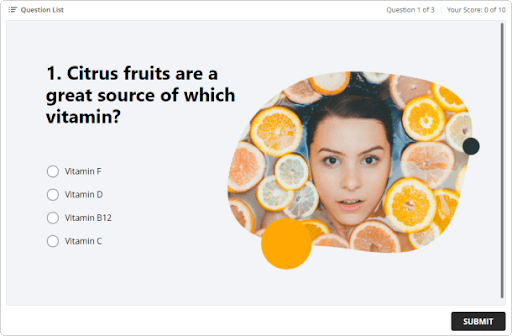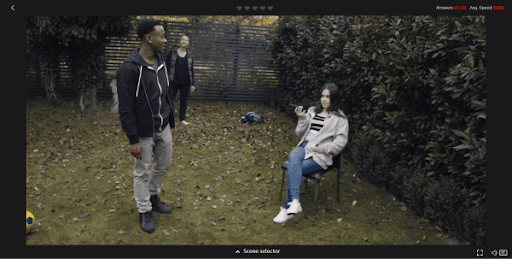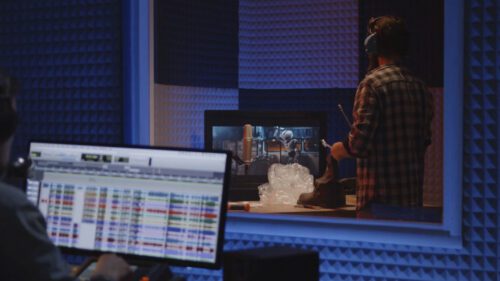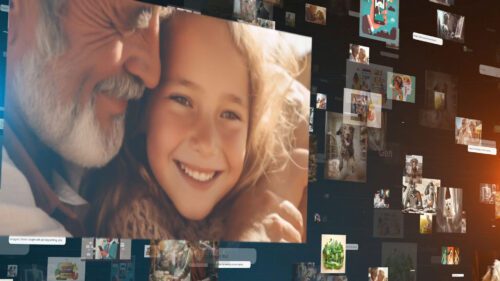With current technology, eLearning is no more an option in education and corporate training, it’s a firm alternative. With the COVID-19 pandemic, the trend for online learning accelerated – many companies, universities, and schools transformed their traditional instructor-led training to the virtual classroom and self-paced e-courses.
In this article, we’ll explain what a typical online course is and how to make it more effective with the help of video.
What Is an Online Course?
Simply put, an online course is any web-based lesson that can be viewed on a computer or mobile device. Courses can take many forms, depending on training needs and the resources that a company is ready to invest in their development.
Here are a few eLearning content types that can be used as separate courses or combined into a single course. Most of them can be created with authoring tools like iSpring Suite.
1. Slide-based courses
This is what most people imagine when they hear about eLearning. Such courses look like PowerPoint slides with the “Next” button and typically include text, images, and videos. They can also feature interactive units and narration.

2. Quizzes
Quizzes or tests come as a part of most online courses. They are interactive tasks that allow you to check learners’ knowledge and see if the learning objectives have been addressed. They can also serve as engaging activities that separate training modules and provide learners with a sense of progression.

3. Role-plays
Role-plays are interactive exercises that imitate real-world conversations with customers, staff members, colleagues, or other persons. They use branched scenarios, which means they let learners take the dialogue down different pathways, depending on the responses they select. Role-plays are perfect for teaching customer service and sales skills.

4. Podcasts
This is another great way to teach new content, but it is most suited for passive, non-assessable learning. Podcasts are good for presenting topics that revolve around mindset and motivation, as well as cases and scenarios, in the form of stories.
5. Training videos
Training videos are an extremely popular format for sharing knowledge. There are several ways you can use them for your training purposes:
- Standalone video tutorials. You can create a video course that will consist of a series of recordings on your topic.
- Embedded videos. You can add YouTube/Vimeo videos on specific topics or recordings you’ve made to your course and mix them together with other interactive content items.
- ILT training playback. You can record your webinars or live training sessions and share them with the learners who didn’t attend the training.
Why Use Videos for Training?
Video training is not new, but it’s becoming more popular every year. And that’s not surprising, since learning this way is extremely convenient. With a single click, you’re watching a lesson wherever you are – at home, in the subway, or in line at the bank.
If you’re still not using videos in your online courses, perhaps it’s time to start! Here’s why it’s a great idea:
Greater engagement
People are 75% more likely to watch a video than to read something. Given their nature, videos can engage people in a way that static text materials cannot. So, by adding a video to your course, you give your learners both what they need and want.
Better knowledge retention
We’ve mentioned that people prefer viewing videos, but what’s also important is that watching is far more effective than reading. Our brain processes visuals better than text, and video images are remembered longer. This was confirmed in a study conducted by the SAVO group, in which visual content was shown to increase knowledge retention by up to 65 %.
Fewer training costs
With modern technologies, creating training videos doesn’t require professional video production skills or big financial investments. Besides, as opposed to face-to-face training, you don’t need to spend a fortune on travel and accommodation costs and trainers’ services.
Speaking of numbers, IBM saved $579 million in 2 years after they started their video learning program, while Microsoft reduced their training costs from $320 per hour per learner to only $17.
Bottom line: adding video content to your course can provide a more cost-effective, engaging, and memorable learning experience for all your trainees.
How to Choose the Right Type of Video
Depending on your learning objectives and the topic of your course, you might opt for different types of videos. Here are some options and where to implement each of them:
Talking head videos

Such videos feature a narrator who speaks directly into the camera. They’re that simple, but with the right video editing tools, you can make them more engaging and effective in terms of comprehension. For example, you can add special effects, freeze frames, complementary graphics, and on-screen text.
A talking head video is a perfect solution when you want an expert in a particular area or topic to explain some important notions and share valuable information with your employees. For instance, add a video with a time management expert to your course who will explain his best practices for greater productivity.
You may also want to use a talking-head video with your onboarding course, for instance. Viewing the welcome video with a CEO and a few members of the company will help new employees feel connected to the team.
Screencasts

Screencasts are typically created to demonstrate a process that’s shown on the screen. This is the best option if you want to explain to your employees how to use the software they need to perform their job duties, e.g., making a guide to Microsoft Excel or creating a step-by-step guide to using an LMS.
Such videos can include a talking head element of the instructor speaking in the corner of the screen and other accompanying visuals that help to eliminate monotony and boredom on the part of the learners.
Live-action videos

Live-action videos look like a movie and require many people (think cast and crew) and gear (cameras, sound equipment, lighting), as well as a well-developed plot and a relevant setting for shooting. They are usually complicated to produce and quite expensive, so for training purposes, this video type may exceed both budget and needs.
However, live-action videos are successfully produced for global learning projects and yield great results. One such project is “Lifesaver,” a complete training film created to teach CPR. It includes interactive elements – a viewer can make the choices they’d have to in an actual situation. If they make the wrong decision, someone dies.
Animated videos
Animated videos are created with drawings, illustrations, and computer-generated effects. With moving graphic elements, you can make an engaging story and explain complex notions or provide a quick guide on how to use a mobile app, for example.
If you have enough skills to create moving graphics and specialized software, it may be a good idea to produce an animated video for your employee training course. Still, this type of video is more often used for teaching customers how to leverage a company’s products or services.
Final Thoughts
We hope this article has provided some insights on how to use videos as a part of online courses. Even simple talking head videos and screencasts that almost everyone can make with minimal overhead can help you significantly improve your students’ learning experience and results.
Storyblocks is a great resource for creating these different types of videos and can help make the creative process faster and the content that much better. Check out our plans today!



